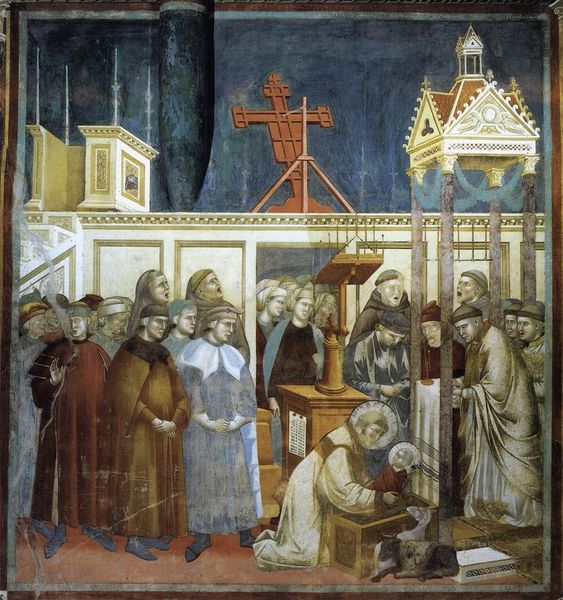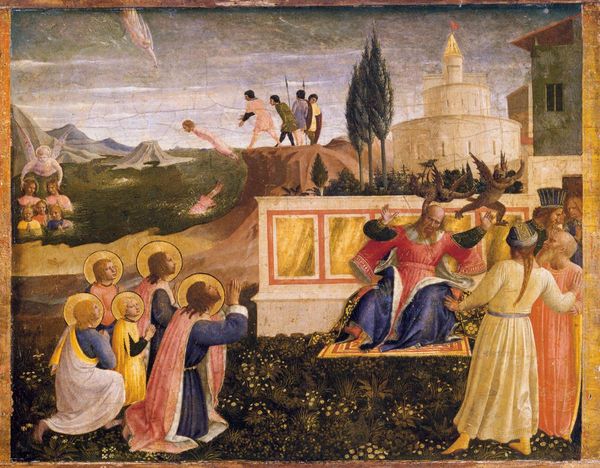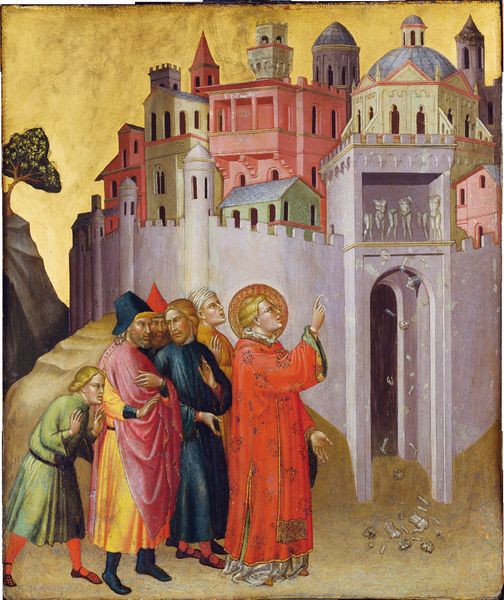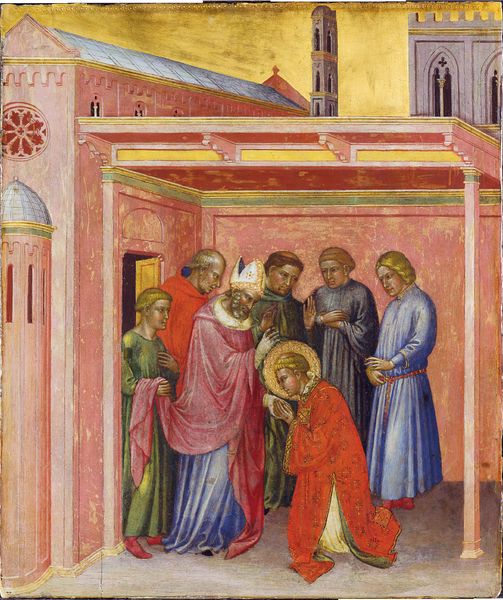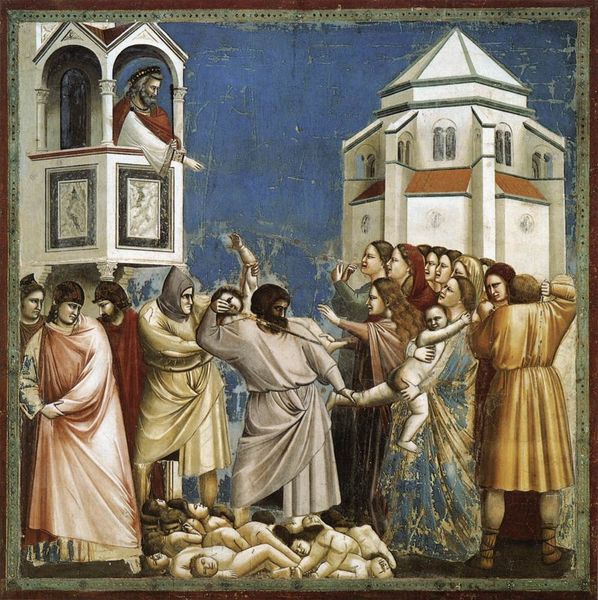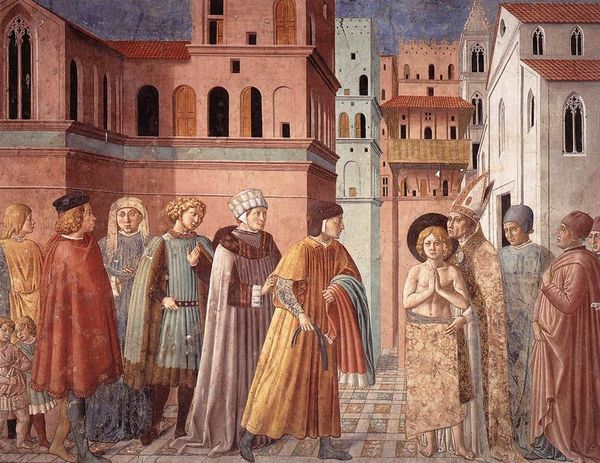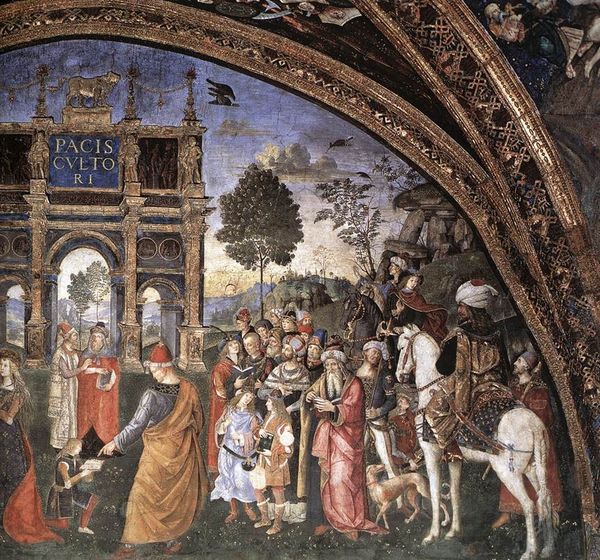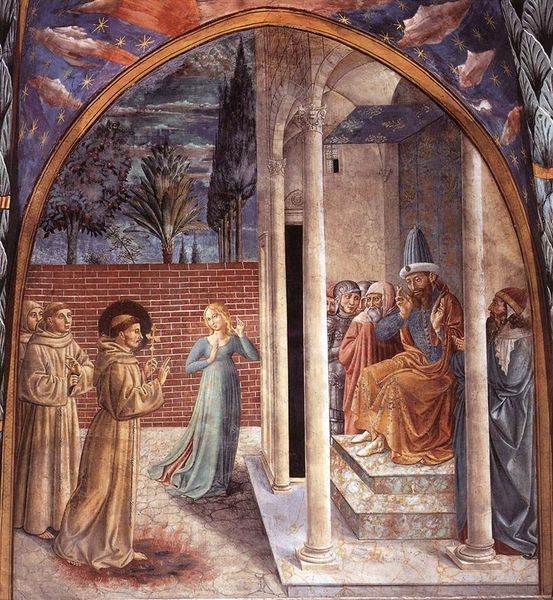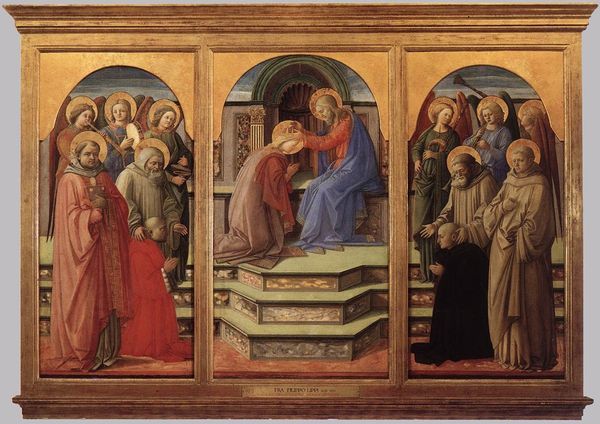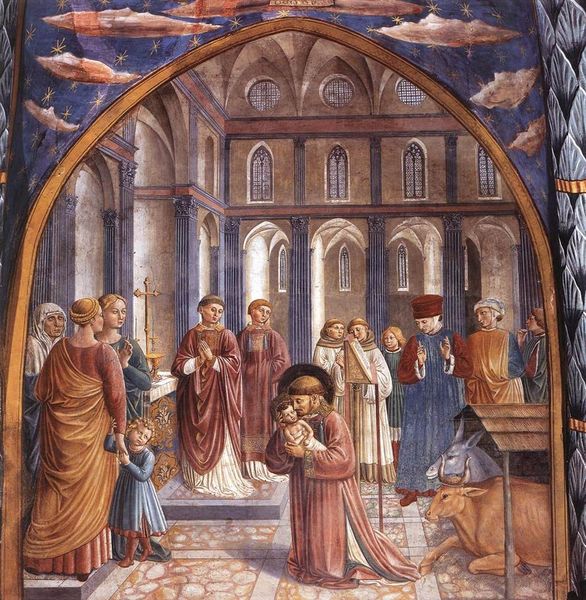
St. Francis Renounces all Worldly Goods 1299
0:00
0:00
giotto
Basilica of Saint Francis of Assisi, Assisi, Italy
painting, fresco
#
narrative-art
#
painting
#
holy-places
#
figuration
#
fresco
#
oil painting
#
earthy tone
#
underpainting
#
christianity
#
history-painting
#
italian-renaissance
#
early-renaissance
#
christ
Dimensions: 270 x 230 cm
Copyright: Public domain
Editor: Here we have Giotto's "St. Francis Renounces all Worldly Goods," a fresco from 1299, located in the Basilica of Saint Francis of Assisi. It strikes me as a very dramatic scene, stark even, with the bare figure of St. Francis in contrast to the richly dressed figures surrounding him. What do you see in this piece beyond the obvious religious narrative? Curator: For me, this fresco speaks volumes about power, privilege, and the deliberate rejection of societal norms. Look at the architectural backdrop Giotto provides – symbols of established authority – juxtaposed against Francis’s literal stripping away of material possessions. Consider, too, the historical context: the burgeoning merchant class, the growing wealth of the church. Francis’s act isn't just piety; it’s a radical statement, a refusal to participate in the escalating materialism of his time. How does this renunciation read today? Is it still radical, or has it been co-opted? Editor: That's fascinating. I hadn't considered the economic implications so directly. I was mostly focused on the individual's spiritual journey. To think about it as resistance to an economic system shifts everything. It seems almost like a proto-protest, right? Curator: Exactly. And we can even look at the figures present. Who is included? Who is excluded? Is there a commentary on class or perhaps nascent ideas on civic responsibility even in their posture? This is more than a simple act of faith. This action is a cultural statement for the ages and raises potent questions of the intersections between spirituality and social justice that are still being worked out today. Editor: This definitely gives me a new framework for thinking about Early Renaissance art. It makes it feel much more relevant. Curator: Agreed. Seeing this work as part of ongoing dialogues is powerful, helping us to evaluate our place in current power structures.
Comments
No comments
Be the first to comment and join the conversation on the ultimate creative platform.
